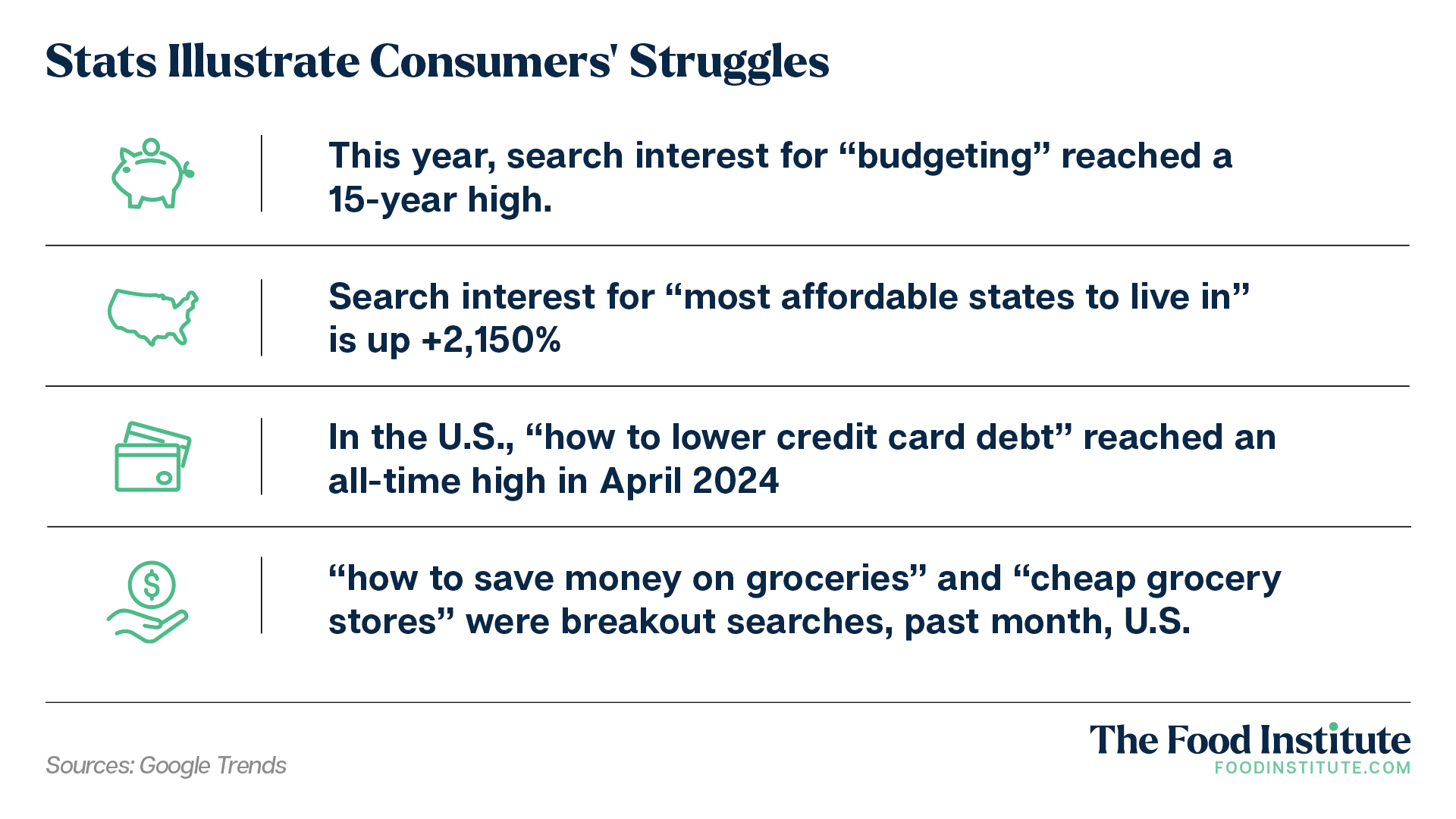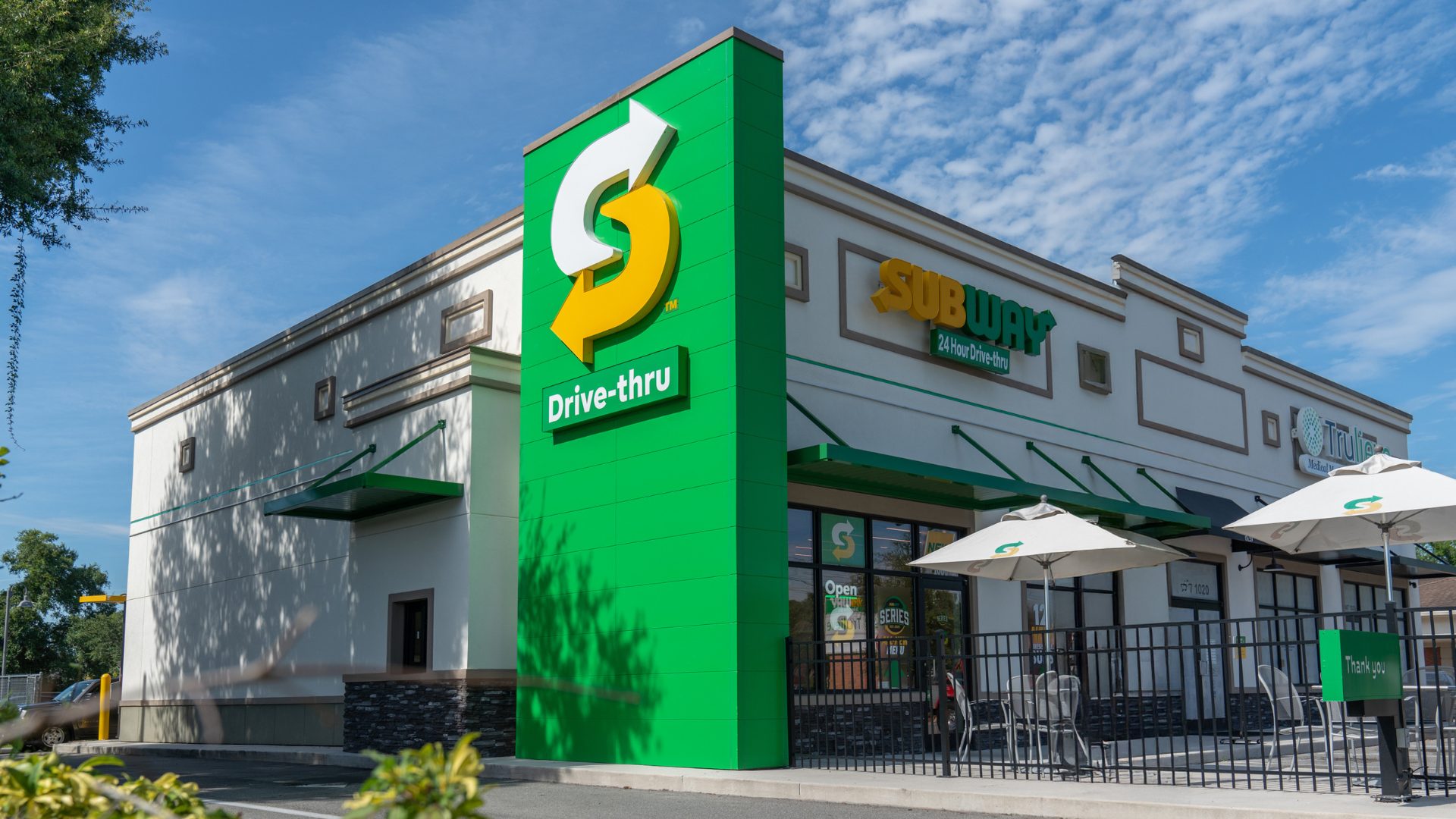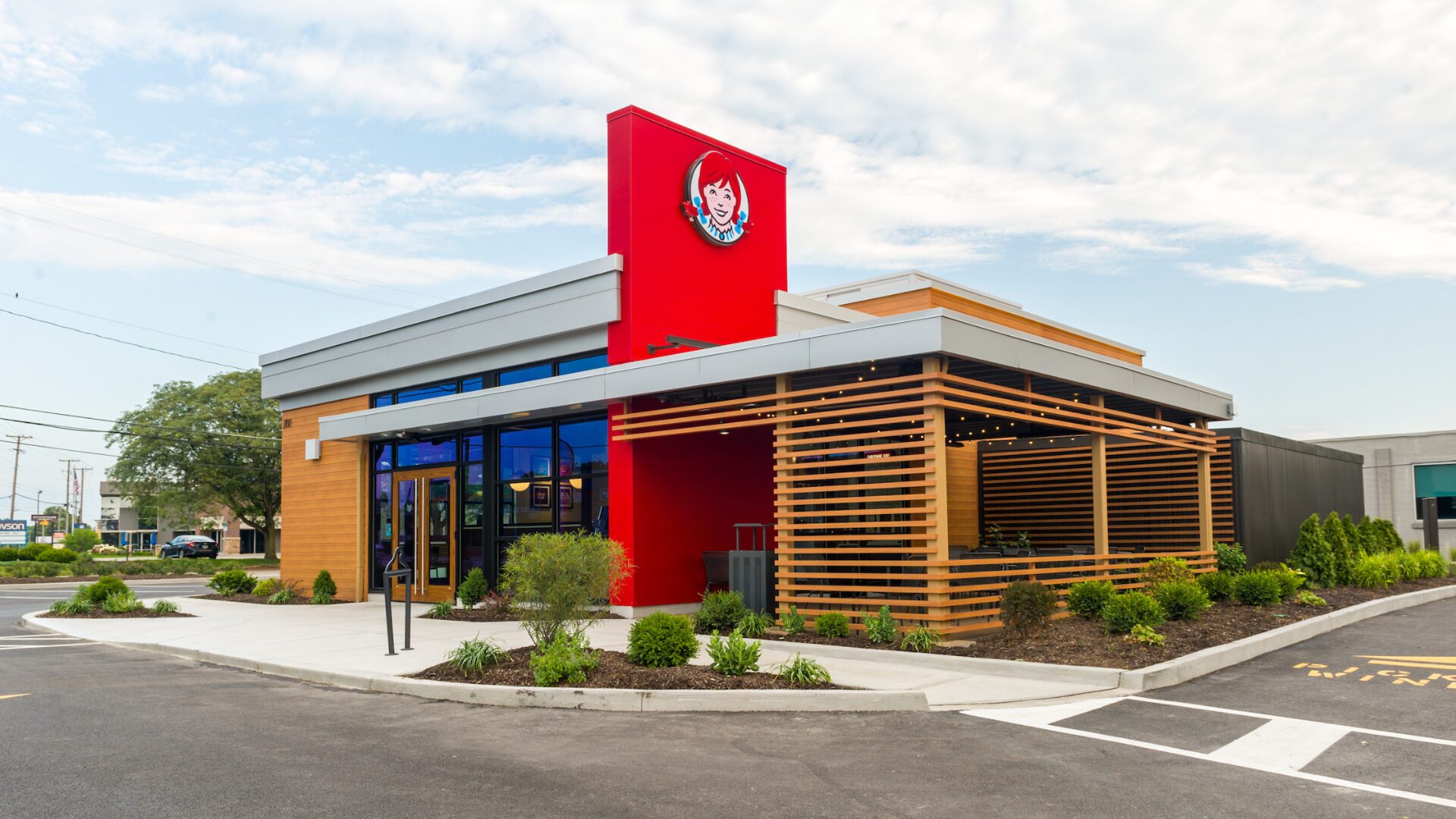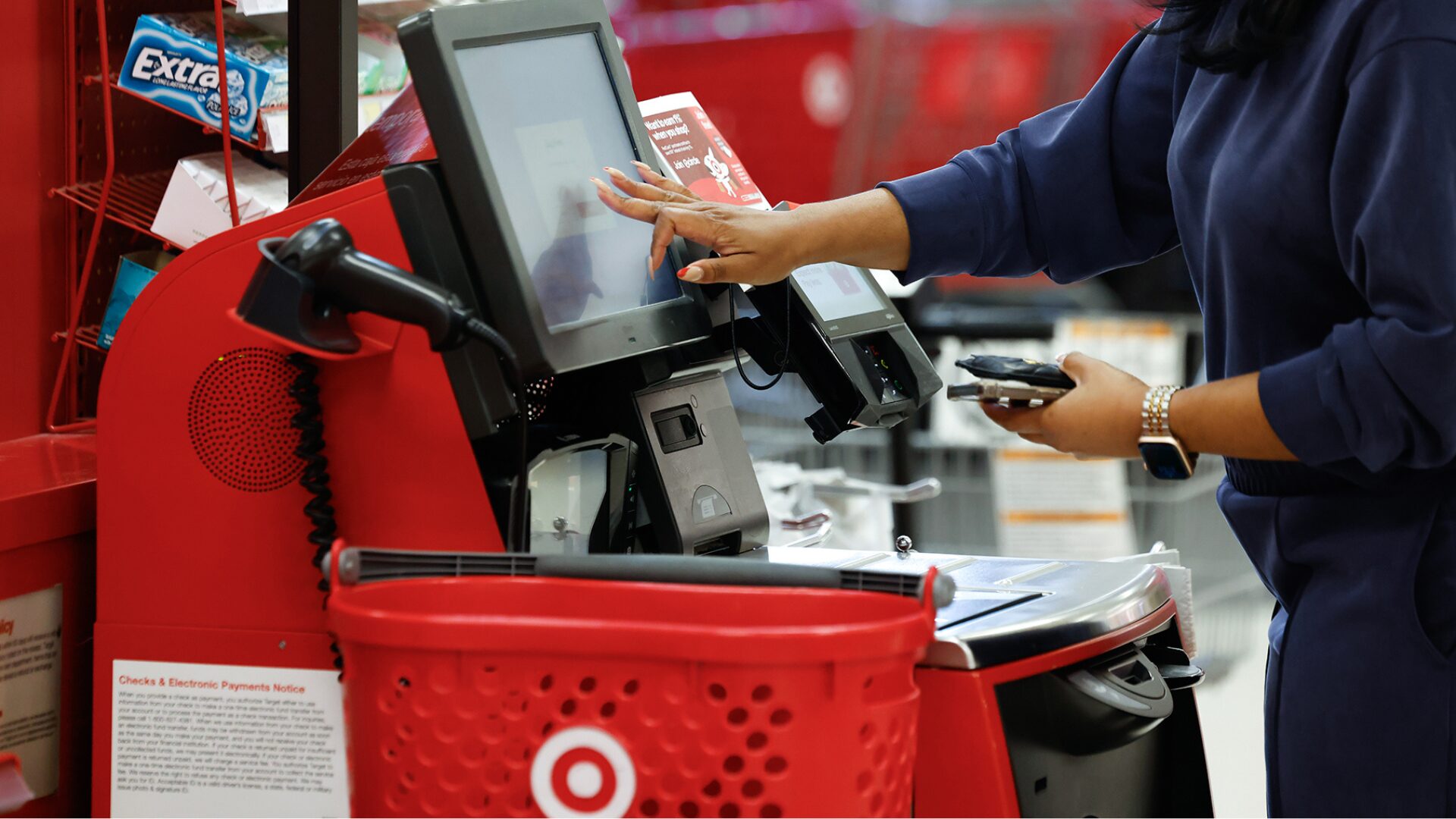Memorial Day Weekend is traditionally a little break from reality – a time to honor the past by staying in the present and celebrating friends, family, and untold numbers of veterans for their service to the country. Many families travel; many don’t do anything at all, merely hoping for a little sunshine, a break from work, maybe a summer blockbuster, possibly a barbecue or two.
For many, however, a little break from reality is hard to come by as inflation scours budgets, food-away-from-home prices continue to peak, and many consumers complain with their wallets by reducing their discretionary spending on food and restaurants (if they can still afford to indulge at all).

First, the most recent CPI numbers from the Bureau of Labor Statistics were less than encouraging. Food price inflation rose 2.2%; food-away-from-home prices jumped more than 4%. Overall inflation abated just 1/10th of a point in April.
McDonald’s teased and then confirmed a $5 meal deal after reporting its quarterly results. CEO Chris Kempczinski described a “street-fighting mentality” for the Golden Arches as it prepares to enter the summer season, fighting for every consumer and nickel available after admitting it had lost its lead on affordability in some domestic markets.
Shortly after the announcement, Wendy’s announced a $3 breakfast meal. Gauntlet, thrown. Shots, fired.
But will it matter when over three-quarters of American consumers now view fast-food as a luxury?
“The biggest challenge for many of these restaurants and retailers alike is they lack the in-depth consumer and competitive insights needed to keep a constant pulse on shifting consumer behavior and the key factors that motivate their purchase decisions,” said Michael Della Penna, chief strategy officer at InMarket, to The Food Institute.
“It’s more important than ever to not only invest in insights, but the AI/predictive technology that can unlock opportunities to better understand your customers and competitors. Once you uncover those insights, you can figure out ways to enhance your offerings and your overall customer experience to attract and retain consumers.
“Now’s the time to think outside of the box and innovate to better serve your customers, capturing both their attention and dollars,” he added, noting that customization has also proven to be a key purchase driver for younger demographics like Gen Z and even Gen Alpha, and that strategizing ways to amplify that benefit across messaging and promotions will help drive engagement, sales, and even virality.
For many operators, engagement, sales, and certainly virality are easier said than done. Make no mistake this Memorial Day weekend – the Value Wars are here.
Consumers Push Back in Retail
On Monday, May 20, Target announced a price drop on over 5,000 items, and two days later reported abysmal financial numbers for its recent quarter: 3.7% decline in same-store sales. A fourth consecutive quarter of decline. Neil Saunders, managing director of GlobalData, told The Wall Street Journal that Target’s performance “is significantly worse than the overall market, which underlines that Target is losing share.”
“For grocers and retailers, it’s no secret that chains are doubling down on private-label offerings and price cuts to bring back lost shoppers from discount and dollar stores,” Della Penna noted.
“In addition to this focus on value, we’re seeing massive improvements in the customer experience with new store formats, expanded take-out meal options, enhanced convenience offerings like late-night delivery and quality-focused food lines. These all point to the direction the ‘Value Wars’ are headed.”
High inflation and shortfalls in efficiency are affecting other industries, too. Disney and Pixar are cutting jobs. TikTok is reportedly preparing for “massive layoffs.” Foxtrot filed for bankruptcy in spectacular fashion, and after a disastrous all-you-can-eat shrimp promotion last summer, Red Lobster finally drowned and also filed for Chapter 11 bankruptcy protection.
Complicating matters is the media-driven prism by which many Americans interpret the overall economy, which casts a not-always-accurate spectrum of ideas, curated sound bites, and much huffing and puffing of hot air and little substance; according to a recent article in The Guardian, nearly three in five Americans believe we’re in a recession. Forty-nine percent believe the S&P 500 stock market is down for the year despite a 2023 increase of 24% followed by another 12% bump this year, while another 49% believe unemployment is at a 50-year-high when it’s under 4% – almost a 50-year low.
Freight costs are rising. Cocoa prices are out of control. And many restaurant and QSR operators are quietly cutting staff and hours in the name of efficiency, which for many is the only financial buoy amid an ocean of rising costs and prices as foot traffic dwindles and tables remain empty.
What is going on? Does anybody really know anything? And can anything be trusted, especially in foodbev, save for the items in the pantry and refrigerator, already (and mercifully) bought and paid for?
Simplify, Simplify, Simplify
“At a certain point, there’s only so far you can cut prices,” Della Penna concluded.
“Whether you’re a restaurant, retailer, and grocer in this ‘race to the bottom,’ you need to take a step back and analyze what your customers are looking for in addition to low costs. Is it the convenience factor? Is it better quality? Is it new products or flavor profiles or a health benefit? Crafting your value proposition is a unique formula that you can create and it normally goes beyond price.”
“In this ‘Value Wars’ era, yes, value is important. But what’s more important is doubling down on your customer insights, staying two steps ahead, and maintaining a constant pulse on your performance and that of your competitors to inform strategies.”
One fact is for certain – there ain’t no (nor ever has been) such a thing as a free lunch, as Robert Heinlen reminded readers almost a century ago in The Moon is a Harsh Mistress. Perhaps that’s one reason why the relatively affordable prospect of fried chicken is catching on at bougie restaurants worldwide when paired with – what else? – champagne.
Earlier this year, Coqodaq, a Korean fried chicken hall in New York, opened to much fanfare with the country’s largest collection of champagne. Coqodaq features a David Rockwell-designed space encouraged to entice the masses and run up the credit card. Whether dogging it on Baltic Avenue or livin’ that caviar dream lifestyle peddled by Robin Leach on Boardwalk, most consumers are looking for the same thing – a decent meal at an affordable price, or the ersatz illusion of a Michelin Star-type affair with a bottle of bubbly.
Perhaps Memorial Day 2025 will offer some perspective on the Value Wars of 2024 when consumers can pay homage to a time when $5 barely buys anything. Until then, if you squint, it might all make sense.
The Food Institute Podcast
How are foodservice consumers contending with persistent inflation? Are they eating more at home, for example, or continuing to treat themselves at their favorite restaurants? The latest episode of The Food Institute Podcast examines that topic with Krystle Mobayeni of BentoBox, who dissected rapidly evolving consumer dining dynamics.












